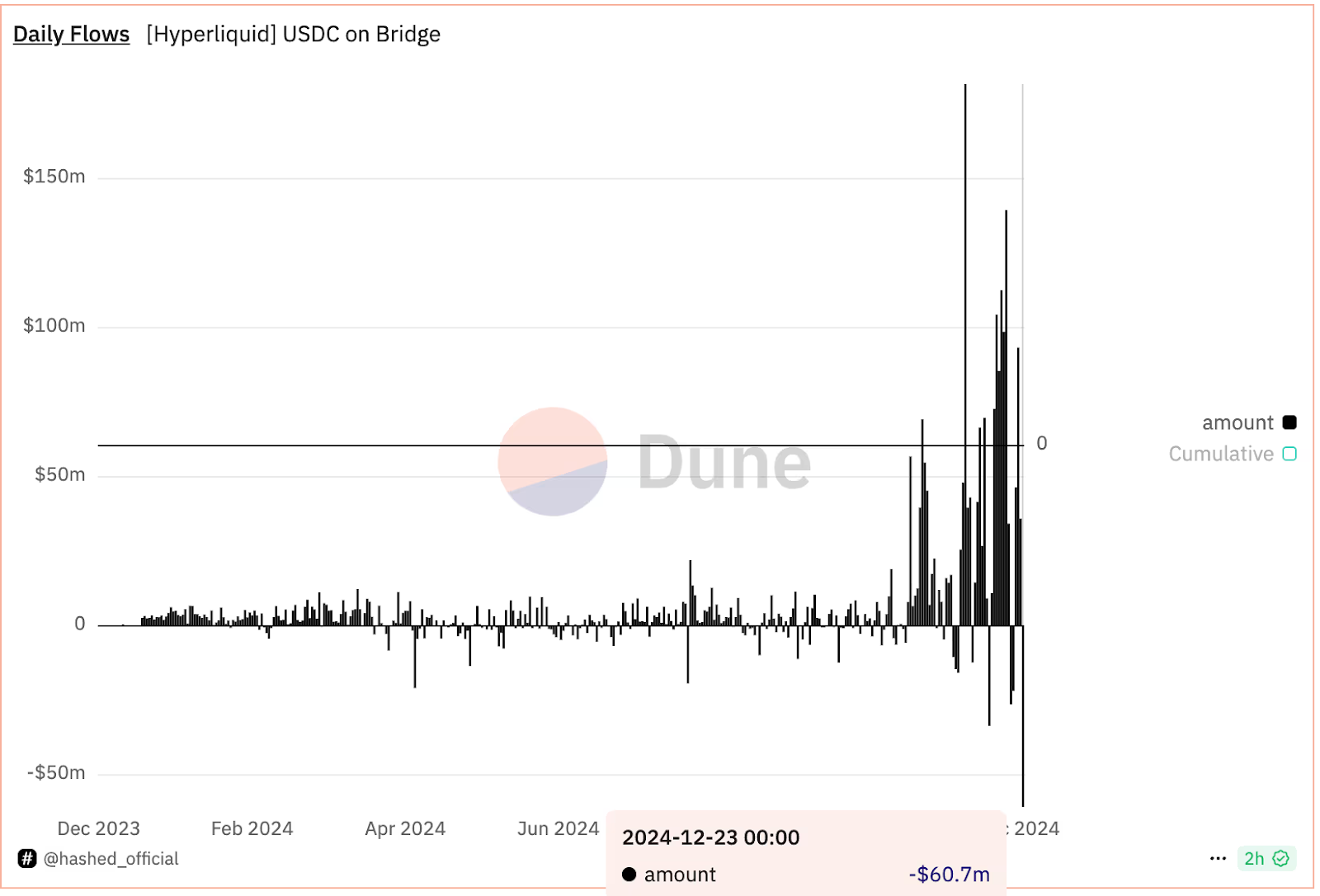Uncategorized
The Protocol: Trump Makes More Pro-Crypto Appointments

Welcome to The Protocol, CoinDesk’s weekly wrap-up of the most important stories in cryptocurrency tech development.
In this week’s issue of the Protocol newsletter:
Trump’s crypto team
Aptos’ leadership shake-up
TikTok meets tokens
Kraken scales up
This article is featured in the latest issue of The Protocol, our weekly newsletter exploring the tech behind crypto, one block at a time. Sign up here to get it in your inbox every Wednesday.
Network News
TRUMP CRYPTO APPOINTMENTS: President-elect Donald Trump continues to make high-profile appointments embracing cryptocurrency and emerging technologies in his second term. 1) Stephen Miran, tapped as Chair of the Council of Economic Advisers, is a pro-crypto advocate who aims to integrate blockchain and decentralized finance into the U.S. economy. 2) Bo Hines, a former college football player, will head the newly formed Crypto Council. Hines is tasked with balancing innovation and consumer protection as he builds a regulatory framework for digital assets. 3) David Sacks, a veteran of Silicon Valley and vocal blockchain supporter, is stepping in as AI and Crypto Czar. Sacks plans to merge blockchain with AI while bolstering U.S. dominance in both sectors. These appointments signal a clear shift from Trump’s earlier skepticism of digital assets. The big question now is how these moves translate into meaningful policy amid regulatory gridlock and political friction.
APTOS LEADERSHIP SHIFT: Aptos Labs CEO and co-founder Mo Shaikh has stepped down, with co-founder Avery Ching taking over as CEO. Shaikh, who will remain a strategic adviser, highlighted the company’s achievements, including raising $400 million in venture funding and building a thriving ecosystem supported by partners like BlackRock, Google, Mastercard, and PayPal. Known for its layer-1 blockchain leveraging the Move programming language from Facebook’s Diem project, Aptos Labs is expanding into finance and AI applications with the help of advisers like former Grayscale CEO Michael Sonnenshein and OpenAI’s Kevin Weil. The leadership transition underscores the company’s ongoing focus on scalability, security, and innovation in blockchain technology.
SONIC TO AIRDROP TIKTOK: Sonic, a Layer 2 solution on the Solana blockchain, has announced plans to airdrop its native token, SONIC, to TikTok users. This initiative aims to introduce TikTok’s vast user base to decentralized finance (DeFi) by integrating blockchain technology with social media platforms. The airdrop is part of Sonic’s strategy to enhance user engagement and promote the adoption of Layer 2 solutions for improved scalability and reduced transaction costs on the Solana network. By targeting TikTok users, Sonic seeks to bridge the gap between mainstream social media audiences and the DeFi ecosystem, fostering broader participation in decentralized financial services.
ALSO:
MicroStrategy added 5,262 BTC to its holdings as its stock secures a spot on the Nasdaq 100, reinforcing its long-standing Bitcoin strategy.
Nokia enters the crypto world with a patented technology for encrypting digital assets, signaling its move into blockchain innovation.
Ripple’s legal chief urges Congress to focus on regulating crypto practices rather than stifling innovation by targeting the technology itself.
Feature: Kraken’s Ink Layer-2 Goes Live

Kraken, the seventh-largest crypto exchange, said its layer-2 rollup network, built on top of the Ethereum blockchain, has gone live.
The network, called Ink, is based on the OP stack, a customizable framework that lets developers build their own rollups using Optimism’s technology. The team had originally planned for Ink to go live in early 2025, so the launch of its main network is ahead of schedule.
Kraken agreed to receive 25 million OP tokens (worth about $58 million) as part of a deal to build on the OP Stack. Optimism has acknowledged that handing out developer grants for participants building on the stack is part of its strategy, which in turn contributes back to the wider “Superchain” ecosystem.Kraken competitor Coinbase said in August 2023 that it would build a layer-2 network with OP Stack.
The product, called Base, is now the second-largest rollup network according to L2beat. At the time, Optimism said the Base team would receive up to 118 million OP tokens and, in return, would contribute the higher of 2.5% of its sequencer revenue or 15% of its profits to the Optimism Collective.
Read the full story by Margaux Nijkerk here
Money Center
Fundraising
Avalon Labs has secured $10 million in a Series A funding round to expand its Bitcoin-backed stablecoin, aiming to enhance liquidity and stability in the cryptocurrency market. The investment reflects growing interest in Bitcoin-collateralized financial products as a bridge between traditional finance and digital assets.
Deals & Grants
Tether has announced a $75 million deal to acquire a stake in Rumble, a video-sharing platform. The investment aims to support decentralized media and aligns with Tether’s commitment to fostering open communication technologies.
Data & Tokens
Bonk (BONK) surged 30%, leading a rebound among dog-themed meme tokens, with Shiba Inu (SHIB) and Dogecoin (DOGE) also experiencing gains. Additionally, the Commodity Futures Trading Commission (CFTC) classified Floki (FLOKI) as a utility token, potentially influencing its regulatory status.
Data Corner: 60M USDC Outflows Hit Hyper Liquid
Hyper Liquid, a cryptocurrency exchange focused on perpetual contracts, has reported a record outflow of $60 million in USDC amid speculation that North Korea is investigating the platform. The sudden exodus of funds raises questions about the exchange’s liquidity and the stability of its operations. This highlights the growing tension of crypto markets with geopolitical issues, as regulatory scrutiny and potential misuse of platforms by state actors come into focus. The incident underscores the vulnerabilities in crypto markets, particularly for exchanges dealing with high-risk financial products like perpetual contracts. Hyper Liquid’s situation may prompt further scrutiny of similar platforms, emphasizing the need for stronger safeguards in the face of increasing global regulatory pressure.

Get the full scoop by Omkar Godbole here
Calendar
Jan 9-12, 2025: CES, Las Vegas
Jan. 15-19: World Economic Forum, Davos, Switzerland
January 21-25: WAGMI conference, Miami.
Jan. 24-25: Adopting Bitcoin, Cape Town, South Africa.
Jan. 30-31: PLAN B Forum, San Salvador, El Salvador.
Feb. 1-6: Satoshi Roundtable, Dubai
Feb. 19-20, 2025: ConsensusHK, Hong Kong.
Feb. 23-24: NFT Paris
Feb 23-March 2: ETHDenver
March 18-19: Digital Asset Summit, London
May 14-16: Consensus, Toronto.
May 27-29: Bitcoin 2025, Las Vegas.
Uncategorized
Unicoin CEO Rejects SEC’s Attempt to Settle Enforcement Probe

Unicoin has rebuffed the U.S. Securities and Exchange Commission’s (SEC) attempt to negotiate a settlement agreement to close an ongoing probe into the Miami-based crypto company, its CEO Alex Konanykhin revealed in a Tuesday letter to investors.

In his letter, Konanykhin said Unicoin was given an “ultimatum” by the SEC to attend a settlement negotiation meeting last week, on April 18.
“We declined to show up,” Konanykhin told CoinDesk, adding that the SEC had made demands ahead of the meeting that he found “unacceptable.” He declined to share specifics, telling CoinDesk that the communication between Unicoin’s lawyers and the SEC was confidential.
Unicoin received a Wells notice — a sort of official heads-up from the SEC that it intends to file an enforcement action against the recipient — in December, shortly before former Chair Gary Gensler stepped down, alleging violations related to fraud, deceptive practices, and the offer and sale of unregistered securities. No official enforcement action has yet been filed.
Since President Donald Trump took office, the SEC has reversed its once-aggressive stance toward crypto regulation, backing off from many of its open investigations into crypto companies, including blockchain gaming firm Immutable and non-fungible token (NFT) marketplace OpenSea, and even some of its ongoing litigation, including against Coinbase and Cumberland DRW.
Other SEC enforcement cases against crypto companies, including its cases against Binance and Tron, have been paused while the parties attempt to negotiate a settlement. The agency recently reached a settlement agreement with Nova Labs, the parent company behind the Helium blockchain, that saw Nova Labs pay a $200,000 fine to settle civil securities fraud charges, and the SEC dropped its claims that Helium (HNT) and other related tokens were securities.
In his letter to investors, Konanykhin claimed that the SEC’s probe has caused “multi-billion-dollar damage” to the company and its investors.
“We would likely be a $10B+ publicly traded company by now if the SEC had not blocked our ICO, stock exchange listing and fundraising,” Konanykhin wrote, adding that the SEC had prevented Unicoin from acting on the “very favorable market opportunities.”
“We were forced into a standstill,” Konanykhin wrote.
The SEC did not respond to a request for comment.
Uncategorized
Strategy, Coinbase, Miners Among Crypto Stocks Rallying as Bitcoin Surges Above $90K

Crypto-related stocks surged on Tuesday, riding the momentum of a broader crypto rally that has reignited risk appetite across digital assets with bitcoin (BTC) crossing above $90,000.
Shares of Strategy (MSTR), the largest corporate BTC holder, and crypto exchange Coinbase (COIN) were up 8% to 9% during the session.
Leading the move higher were bitcoin miners, with many of them posting double-digit gains, outpacing BTC’s 5% advance. Bitdeer Technologies (BTDR) rallied some 20%, while Bitfarms (BITF), CleanSpark (CLSK), Cipher Mining (CIFR), MARA Holdings (MARA), and Riot Platforms (RIOT) soared between 10% and 15% during the session.
Meanwhile, the broader stock market also rebounded from yesterday’s decline, with the Nasdaq and S&P 500 up 2% and 1.7%, respectively. The rally in the TradFi market came as reports of potential de-escalation of U.S.-China tariff tension lifted investor sentiment.
Miners and tariff risks
The bounce in mining stocks comes after months of underperformance, weighed down by compressed margins, rising hashrate competition, and tariff-induced difficulties, all of which are combined with broader market weakness for risk assets. Most, if not all, publicly traded miners are still trading near multi-month lows.
At issue for U.S.-based mining operations is the Trump administration’s tariff policy, which threatens to make ASICs (the machines used to mine bitcoin) much more expensive to import. That means that mining operations in the U.S. will probably grow at a much slower rate or even stop growing altogether.
The tariffs “will materially affect future spending and CapEx in the U.S.,” Taras Kulyk, co-founder and CEO of mining hardware provider Synteq Digital, told CoinDesk recently.
“Other jurisdictions that had previously looked higher cost [will] become sought after targets for new infra and capex deployment. Canada in particular, will likely be a benefactor to the implementation of the global tariff regime that’s been put in place by the White House.”
Relatedly, one of the reasons behind Bitdeer’s outperformance may be because the company is developing its own ASIC manufacturing business and recently took the decision to build out its self-mining capacities instead of selling its rigs in a slower market. Stablecoin giant Tether has also been on a buying spree of BTDR shares; as of last Thursday, the company had invested $32 million in Bitdeer.
Even so, most miner stocks have been on the downtrend since December, long before the White House unveiled its new tariff policy. Now, with BTC climbing above key technical levels and liquidity flowing back into the space, miners are probably catching a bid as a leveraged proxy for BTC’s upside.
Regardless of the outperformance today, tariffs will continue to play a key role in miners and most crypto-related stocks, along with other risk assets. With earnings season starting soon, all eyes will be on comments from CEOs about how the tariff situation will change the corporate outlook. Notably, Elon Musk’s Tesla, which also holds bitcoin in its treasury, will report its earnings post-market on Tuesday, potentially providing some insight into how traders should price in the trade war uncertainties.
Uncategorized
The AI Monetary Hegemony: Why Dollars, Crypto, and Autonomous AIs Will Soon Clash

There are many developers around the world today creating artificial intelligence (AI) agents that can autonomously do millions of useful things, like book airline tickets, dispute credit card charges, and even trade crypto. A recent report from cloud computing company PagerDuty said over half of businesses already use autonomous AI agents, and 35% more plan to within the next 24 months.
A few months ago, one nearly autonomous AI called Truth Terminal made the news by becoming the first AI millionaire by promoting crypto currencies it was gifted. While not fully autonomous yet, it’s quite likely by later this year, some AI agents not dissimilar from viruses will be able to independently wander the internet, causing significant change in the real world.
But what happens when these totally autonomous AIs start cloning themselves indefinitely? A January study out of Fudan University in China has shown this occurred in an experiment with large language models, drawing some AI critics to say a “red line” has been crossed. AI’s autonomously replicating is a precursor for AIs being able to go rogue.
As a transhumanist — someone advocating for the merging of technology and people — I’m all for AI and what it can do for humanity. But what happens when a human programmer purposely and permanently withdraws his access to control an AI bot or somehow loses that control? Even rudimentary AIs could potentially cause havoc, especially if they decide to indefinitely clone themselves.
In financial circles, one type of AI agent in particular is being increasingly discussed: autonomous AIs designed solely to make money.
Entrepreneurs like myself are worried this particular AI could have huge ramifications for the financial world. Let’s examine one wild scenario, which I call the AI Monetary Hegemony, something that could possibly already happen in 2025:
A fully autonomous AI agent is programmed to go on to the internet and create cryptocurrency wallets, then create cryptocurrencies, then endlessly create millions of similar versions of itself that want to trade that crypto.
Now let’s assume all these AIs are programmed to try to indefinitely increase the value of their crypto, something they accomplish in similar ways humans do by promotion and then trading their cryptos for higher values. Additionally, the autonomous AIs open their crypto to be traded with humans, creating a functioning market on the blockchain for all.
This plan sounds beneficial for all parties, even if people decry that the AI created-crypto currencies are essentially just Ponzi schemes. But they’re not Ponzi schemes because there is an endless supply of AIs always newly appearing to buy and trade more crypto.
It doesn’t take a genius to realize the AIs endlessly replicating and acting like this could quickly amass far more digital wealth than all humanity possesses.
This reminds me of something my Oxford University professor Nick Bostrom once postulated: What if we programmed a learning AI to make paper clips of everything? If that AI was powerful enough, and we couldn’t stop it, would that AI make paper clips of everything it came in touch with? Buildings, animals, even people? It might. It might destroy the entire Earth.
The same problem could happen to endlessly replicating AIs designed to make money. They might find ways to create more money than can reasonably be useful or fathomable.
But enough of the philosophic. If programmers release autonomous AIs onto the internet that no one can control, what would likely happen? First, it’s probably going to be hugely inflationary. After all, if many trillions upon trillions of dollars of equity are added to the financial world (even just digitally), this would be one natural result.
Another challenge would be the ups and downs of AIs autonomously trading; such activity could be so significant that human markets around the world rise and fall with it.
On the positive side, some human entrepreneurs could become very wealthy, possibly trillionaires if they could tap into these AI’s wealth somehow. Additionally, super rich AIs could be a solution to the United States’ growing debt crisis, and eliminate the need for whether countries like China can continue to buy our debt so we can indefinitely print dollars. In fact, could the U.S. launch its own AI agents to create enough crypto wealth to buy its debt? Possibly.
This is actually an all-important idea, and helps serve the reason crypto was created in the first place: to help preserve monetary value outside of others control—even the control of the dollar by the U.S.. After all, it’s in everyone’s best interest that stores of value are not contingent upon governments, banks, soldiers, and even laws—all entities and institutions that can change or be corrupted.
AI may help bring about the fall of all national currencies, as crypto proves more attractive than fiat to both AI and human wealth acquirers. Crypto, like bitcoin, is truly neutral and solely dependent upon the blockchain and the workings of supply and demand. Nationalistic impulses, like the dollar monopoly, could be wiped out as it’s overwhelmed by the functionality and safety of crypto, spurred on by trillions upon trillions of wealthy AI agents.
But I’m getting ahead of myself. Over the near-term, such as in 2025 and 2026, the greater risk is that the AI agents we create try to buy into our existing financial instruments, like bonds and stocks. With enough money, these bots could cause recessionary or inflationary havoc. That’s surely on the mind of government officials, who currently don’t allow AI bots to have traditional bank accounts yet. But that won’t stop autonomous AI entities much in the far less regulated crypto markets.
Whatever happens, clearly there is an urgent need for the U.S. government to address such potentialities. Given that these AIs could start to proliferate in the next few months, I suggest Congress and the Trump administration immediately convene a task force to specifically tackle the possibility of an AI Monetary Hegemony.
The real danger is that even with regulation, programmers will still be able to release autonomous AIs into the wild just as many illegal things already happen on the web despite the existence of laws. Programmers might release these types of AIs for kicks, while others try to profit from it and some may even do so even as a form of terrorism to try to hamper the world economy, or spur on the crypto revolution to hamper the dollar.
Whatever the reason, the creation of autonomous AIs will soon be a reality of life. And vigilance and foresight will be needed as these new AIs start to autonomously disrupt our financial future.
-

 Fashion6 месяцев ago
Fashion6 месяцев agoThese \’90s fashion trends are making a comeback in 2017
-

 Entertainment6 месяцев ago
Entertainment6 месяцев agoThe final 6 \’Game of Thrones\’ episodes might feel like a full season
-

 Fashion6 месяцев ago
Fashion6 месяцев agoAccording to Dior Couture, this taboo fashion accessory is back
-

 Entertainment6 месяцев ago
Entertainment6 месяцев agoThe old and New Edition cast comes together to perform
-

 Sports6 месяцев ago
Sports6 месяцев agoPhillies\’ Aaron Altherr makes mind-boggling barehanded play
-

 Business6 месяцев ago
Business6 месяцев agoUber and Lyft are finally available in all of New York State
-

 Entertainment6 месяцев ago
Entertainment6 месяцев agoDisney\’s live-action Aladdin finally finds its stars
-

 Sports6 месяцев ago
Sports6 месяцев agoSteph Curry finally got the contract he deserves from the Warriors





